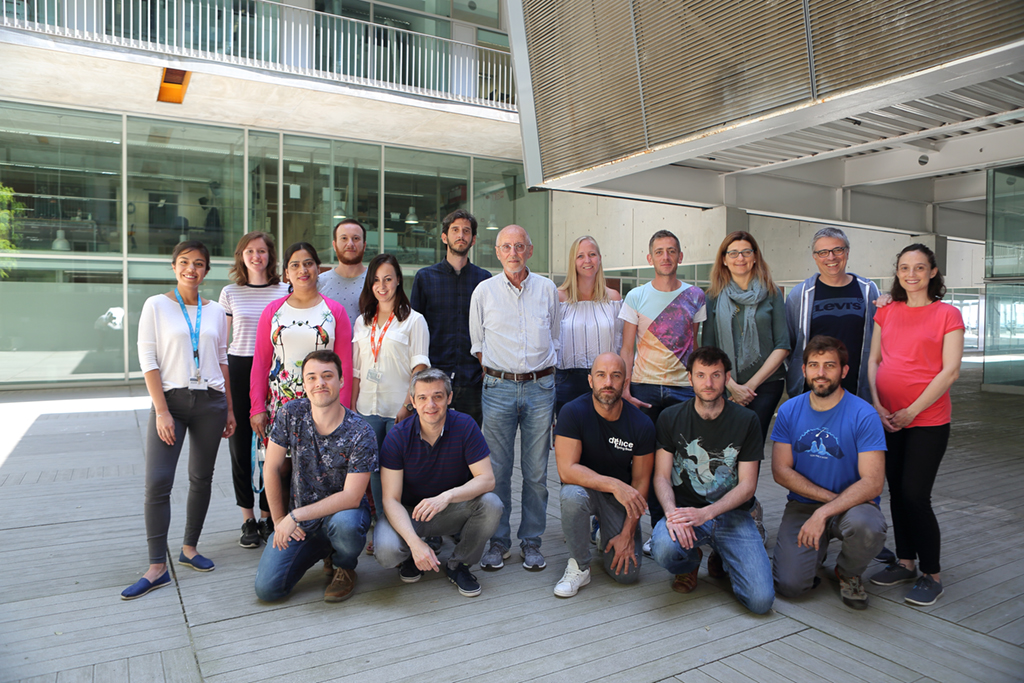Kumar A, Sharma P, Shcheprova Z, Daulny A, Sanmartin T, Matucci Irene, Funaya C, Beato M, Mendoza M.
“Cell-specific modulation of nuclear pore complexes controls cell cycle entry during asymmetric division”
bioRxiv, doi: 10.1101/203232 (2017).
LeDily F, Vidal E, Cuartero Y, Quilez J, Nacht S, Vicent GP, Sharma P, Verde G, Marti-Renom M, Beato M.
“Hormone control regions mediate opposing steroid receptor-dependent genome organization”
bioRxiv, doi: 10.1101/233874 (2017).
Nacht SA, Beato M, Vicent GP.
“Steroid hormone receptors silence genes by a chromatin-targeted mechanism similar to those used for gene activation”
Transcription, 8:15-20 (2017). Point of View
Quilez J, Vidal E, Le Dily F, Serra F, Cuartero Y, Stadhouders R, Graf T, Marti-Renom M, Beato M
“Parallel sequencing lives, or what makes large sequencing projects successful”
GigaScience, GIGA-D-a7-00192 (2017).
Sharma P, Lioutas A, Quilez J, Fernandez-Fuentes N, Wright, RHG, Beato M.
“Arginine de-imination of RNA polymerase II C-terminal domain regulates transcriptional pausing”
bioRxiv, doi:10.1101/216143 (2017).
Stadhouders R, Vidal E, Serra F, Di Stefano B, Le Dily F, Quilez J, Gomez A, Collombet S, Berenguer C, Cuartero Y, Hecht J, Filion G, Beato M, Marti-Renom MA, Graf T.
“Genome topology can direct gene regulatory path choice during cell reprogramming”
bioRxiv, doi:10.1101/132456 (2017).
Vidal E, Le Dily F, Quilez J, Sradhouders R, Cuartero Y, Graf T, Marti-Renom M, Beato M, Filion G.
“OneD: increasing reproducibility of Hi-C samples with abnormal karyotypes”.
bioRxiv, doi: 10.1101/148254 (2017).
